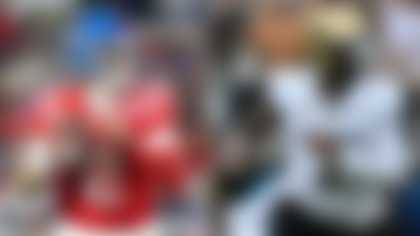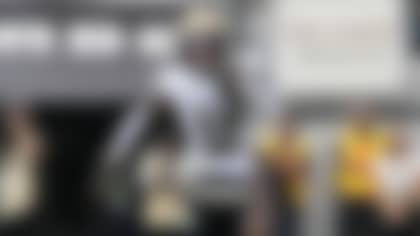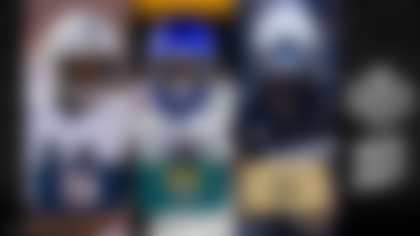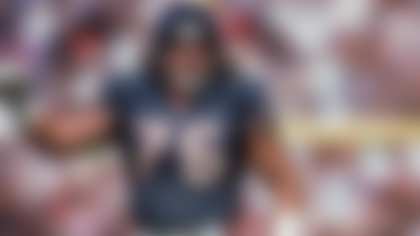INDIANAPOLIS (AP) - Indianapolis won't ever be mistaken for Miami's South Beach or New Orleans' Bourbon Street, but visitors headed to the Circle City for the Super Bowl will find plenty of attractions, great restaurants and interesting taverns - not to mention some uniquely Hoosier experiences.
The same can-do spirit and public-private partnerships that delivered the Colts from Baltimore in 1984 and won hosting rights for this year's Super Bowl have transformed a once-sleepy city center into a vibrant, pedestrian-friendly district filled with office towers, shops, eateries, bars, museums, theaters and historic churches.
The city nicknamed the Crossroads of America has turned out such cultural icons as writer Kurt Vonnegut, comedian David Letterman and the Indianapolis 500. It boasts one of the world's largest children's museums, an infamous shrimp cocktail and jazz and blues at a legendary venue with roots in the Underground Railroad.
And even though the weather in the first week of February can be unpredictable, as apt to produce highs in the 60s as 6-inch snowfalls, tourism officials are confident Indy has something to offer everyone descending for the Feb. 5 game at Lucas Oil Stadium.
FOOTBALL FESTIVITIES: Though this is its first Super Bowl, Indianapolis is no stranger to major sporting events: Lucas Oil Stadium three years ago hosted the sixth NCAA Men's Final Four held in downtown Indianapolis, and the Super Bowl Village took a trial run as a tailgating zone during the Big Ten football championship game Dec. 3. The Indianapolis Motor Speedway draws thousands of fans each year for the 500 and Brickyard 400.
One of the city's selling points as a Super Bowl site was the abundance of hotels and attractions within easy walking distance of the stadium.
That accessibility will be on display at the free, family-friendly Super Bowl Village opening Jan. 27, with more than 80 national, regional and local bands performing on two stages and Tailgate Town, featuring tailgate competitions, football turf and interactive games. Thrill-seekers willing to brave the elements can pay $10 to race 650 feet down Georgia Street, the heart of the Super Bowl village, on one of four zip lines strung 80 feet above ground.
The NFL Experience interactive theme park in the Convention Center bordering the west end of the village is expected to draw 200,000 fans paying $25 ($20 for kids under 12) to attend football clinics and autograph sessions, what's billed as the largest football memorabilia show ever and a replica of an NFL locker room as it appears on game days. The NFL also will let 5,000 fans buy tickets to attend Super Bowl Media Day on Tuesday, Jan. 31, at Lucas Oil Stadium just two blocks away.
EATING OUT: Bars and restaurants ring the stadium, but none as historic as the Slippery Noodle at Meridian and South streets, where bars have operated since 1850. It served as a stop on the Underground Railroad during the Civil War, as a hangout for John Dillinger's gang during Prohibition (Dillinger is buried in Crown Hill Cemetery a few miles away) and as a bordello up until 1953. Today, the venue is a tour stop for regional and national blues acts.
A can't-miss for steak fans is St. Elmo Steak House, an Indianapolis fixture since 1902. But here, the steaks are often upstaged by its famous shrimp cocktail with hot and spicy sauce.
Another popular eatery is the Red Key Tavern, featured in Indianapolis-born author Dan Wakefield's "Going All the Way" (the 1997 movie based on the story starred Ben Stiller and Jeremy Davies). Be sure to check out the model airplanes hanging from the ceiling.
HOOSIER HYSTERIA: It wouldn't be Indiana without the basketball mania that's referred to as "Hoosier Hysteria." Sports fans seeking a diversion from football can explore some of the greatest temples of hoops tradition in Indiana.
Must-sees include Hinkle Fieldhouse on the Butler University campus on the city's north side, the longtime home of the single-class state high school finals and featured in the final scenes of "Hoosiers." The Bulldogs, the NCAA runners-up for two years running, have home games there Feb. 2.
The NCAA's Hall of Champions downtown features a replica of a 1930s basketball gymnasium.
The Indiana Basketball Hall of Fame, about an hour's drive to the east in New Castle, celebrates the state's basketball heritage from the late 1800s with interactive exhibits, memorabilia from past state championship teams and a courtyard containing more than 6,000 engraved bricks arranged in the shape of Indiana. The bricks feature the names of the teams, coaches, players, and others who have been a part of the state's basketball tradition.
Those just wanting to see a game can catch the Indiana Pacers in action with home games at Banker's Life Fieldhouse Jan. 31 and Feb. 4.
UNIQUELY INDIANA: White River State Park immediately west of the Convention Center provides a greenway connecting the Indianapolis Zoo and White River Gardens, an IMAX theater, the NCAA Hall of Champions Museum, the Indiana State Museum and the Eiteljorg Museum of American Indians and Western Art.
The Central Canal linking the museums runs past two of the downtown area's many military monuments, the Medal of Honor Memorial and another honoring the crew of the USS Indianapolis, which was hit by three Japanese torpedoes and sank in shark-infested waters of the Pacific Ocean on July 30, 1945, after delivering components for the atomic bomb that would be dropped on Hiroshima. The Indianapolis' death toll of 880 from a crew of nearly 1,200 men is the U.S. Navy's worst single loss of life at sea.
Four blocks east of the USS Indianapolis Memorial is the Indiana War Memorial Plaza Historic District, home to two museums and 24 acres of monuments, statues and sculptures and the national headquarters of the American Legion. The monolithic War Memorial's upper floor is the 110-foot-tall Shrine Room, symbolizing peace and unity and made of materials from across the world because of the global nature of the "Great War." The city's nickname, Circle City, derives from the circular street surrounding the Soldier and Sailors' Monument.
During World War II, 20-year Kurt Vonnegut joined the Army and was captured by the Germans at the Battle of Bulge. He and other prisoners survived the Allied firebombing of Dresden because they were housed underground in a former meat locker and slaughterhouse, but the experience marked him forever and inspired his novel "Slaughterhouse-Five."
The year-old Kurt Vonnegut Memorial Library, tucked into a storefront between the canal and the War Memorial, is small but fascinating for literary lovers. It contains a Nazi sword he brought back to the U.S. and a letter his father sent to him, but which he hadn't opened because he was in German hands at the time. The walls are covered with portraits and photos of the author, his artwork, his typewriter from the 1970s, and recreation of his writing den.
Vonnegut's grandfather, second-generation German-American Bernard Vonnegut, designed the Athenaeum, once one of the largest social clubhouses in the U.S. with an auditorium, gym, and restaurant, the Rathskeller. It's part of downtown's Mass Ave cultural district, a collection of galleries, shops restaurants and bars that also includes the Chatterbox, a tiny jazz club once visited by Mick Jagger when the Rolling Stones were in town. A giant mural of Vonnegut looms over the 300 block of Massachusetts Avenue.
"I don't know what it is about Hoosiers," Vonnegut wrote in the novel "Cat's Cradle." "But wherever you go there is always a Hoosier doing something very important there."
Online:
Indianapolis Tourism: http://visitindy.com/
Indianapolis Downtown: http://www.indydt.com



